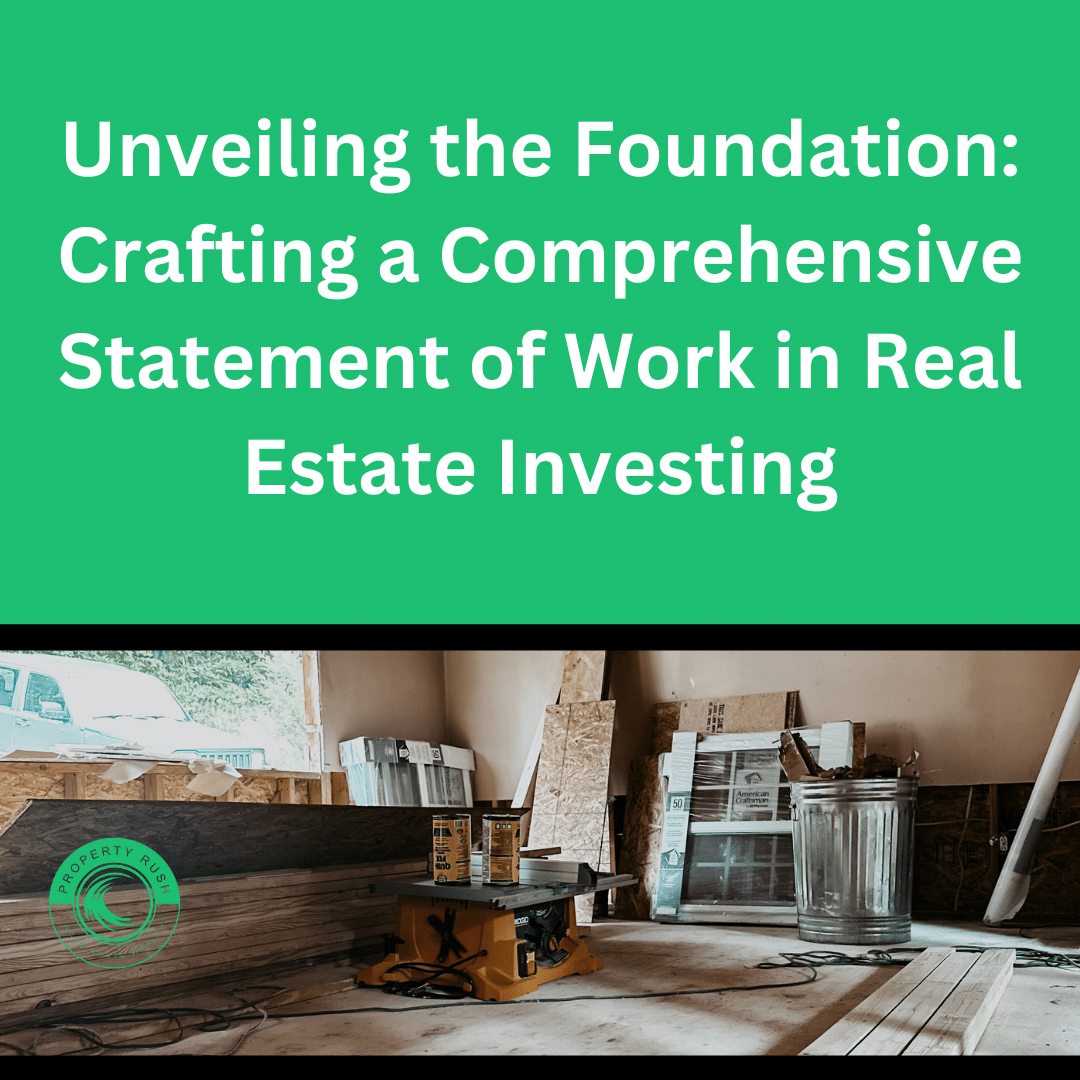This Single Document Could Save You
Hundreds of Hours and Dollars—Are You Using It?
When it comes to real estate investing, many enthusiasts are quick to focus on the excitement of property acquisition, potential returns, and market trends. However, there’s a vital yet frequently underestimated element that serves as the bedrock of successful real estate ventures: the Statement of Work (SOW). This often overlooked document plays a critical role in defining project scope, expectations, and outcomes. In this blog, we’ll delve into the significance of crafting a comprehensive and detailed SOW in the realm of real estate investing.
Understanding the Statement of Work (SOW)
In essence, a Statement of Work is a comprehensive document that outlines the scope, tasks, deliverables, timeline, and expectations for a project. It serves as a roadmap, providing clarity to all parties involved, including investors, contractors, property managers, and other stakeholders. A well-crafted SOW lays the foundation for a successful project by minimizing misunderstandings, reducing scope creep, and establishing a framework for accountability.

The Crucial Role in Real Estate Investing
While the concept of a SOW is applicable across various industries, its role in real estate investing takes on particular significance due to the complex nature of property projects. Here’s why a robust SOW is crucial for real estate investors:
- Clear Communication: A detailed SOW ensures that all parties understand their roles and responsibilities. Investors can articulate their vision, contractors can comprehend project expectations, and property managers can effectively plan for ongoing operations.
- Risk Mitigation: Real estate projects are not without risks. A thorough SOW anticipates potential challenges and outlines mitigation strategies. This helps prevent costly delays and disputes, safeguarding the investment’s profitability.
- Budget Control: By explicitly detailing the tasks, materials, and costs involved, an SOW aids in accurate budget estimation and monitoring. It prevents unexpected expenses and ensures that financial aspects are well-managed throughout the project lifecycle.
- Quality Assurance: An SOW serves as a benchmark for assessing the quality of work. Clear specifications leave little room for interpretation, ensuring that the final product aligns with the investor’s expectations.
- Legal Protection: In case of disputes, a comprehensive SOW can serve as a legal reference point. It outlines the agreed-upon terms, reducing the potential for disagreements and providing a foundation for resolution.
Components of a Comprehensive SOW
Crafting an effective SOW requires attention to detail and a comprehensive approach. Here are the key components to include:
- Project Overview: Begin with a clear description of the project’s purpose, goals, and objectives. This sets the context for the entire document.
- Scope of Work: Define the specific tasks, activities, and deliverables that need to be completed. Use clear and concise language to leave no room for ambiguity.
- Timeline and Milestones: Outline a realistic timeline for each phase of the project, including start and end dates for major milestones. This helps in tracking progress and managing expectations.
- Roles and Responsibilities: Clearly identify the roles of each party involved, such as investors, contractors, designers, and property managers. This section minimizes confusion and aids collaboration.
- Budget and Payment Terms: Provide a breakdown of estimated costs for labor, materials, and other expenses. Specify payment terms, milestones for payment release, and mechanisms for handling unforeseen expenses.
- Quality Standards: Detail the expectations for quality and performance. This could include materials to be used, workmanship standards, and any testing or inspection requirements.
- Change Management: Define the process for handling changes to the project scope, timeline, or budget. This helps prevent scope creep and ensures transparency in decision-making.
- Communication Plan: Lay out the channels and frequency of communication among stakeholders. Effective communication is crucial for keeping everyone informed and aligned.
- Risk Management: Identify potential risks and provide strategies for addressing them. This demonstrates foresight and preparedness in navigating challenges.
Conclusion
The Statement of Work might not be as glamorous as choosing the perfect property or envisioning its potential returns, but its significance in real estate investing cannot be overstated. By meticulously crafting a comprehensive and detailed SOW, investors set themselves up for success by fostering clear communication, minimizing risks, maintaining budget control, and ensuring high-quality outcomes. In the intricate puzzle of real estate investing, the SOW acts as the cornerstone, providing the stability and structure needed for projects to flourish. Property Rush works with a skilled an experienced contractor and together they craft a customized SOW for each individual investment property. Why is this important to a turnkey real estate investor? As a turnkey real estate investor, your goal is to reap the rewards of a ready-to-go investment. By understanding the Property Rush Process, you’re not just ensuring that the property meets your expectations, but you’re also safeguarding your investment and setting the stage for a successful and hassle-free real estate venture. Just as a ship needs a strong hull to navigate stormy seas, a comprehensive SOW provides the foundation for your journey in the world of turnkey real estate investing.






